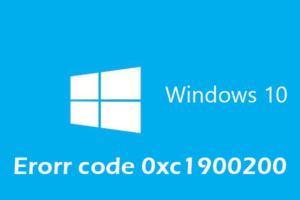-
Table of Contents
Boost Your Office Applications with Office Click to Run High CPU
Office Click-to-Run is a technology used by Microsoft Office applications to deliver and update the software over the internet. However, some users may experience high CPU usage when running Office applications, which can slow down their performance. In this article, we will explore ways to speed up Office applications by addressing the Office Click-to-Run high CPU issue.
Troubleshooting Office Click to Run High CPU Usage
Office Click to Run High CPU: Speed Up Office Applications
In today’s fast-paced business environment, time is of the essence. Every second counts, and any delay can have a significant impact on productivity. One common issue that many office users face is high CPU usage when running Office applications. This can be frustrating and can slow down your work. However, there are steps you can take to troubleshoot and speed up your Office applications.
Firstly, it is important to understand what causes high CPU usage in Office Click to Run. One possible reason is that there are too many background processes running simultaneously. These processes can consume a significant amount of CPU resources, resulting in slower performance. Another reason could be outdated or incompatible add-ins or plugins. These can cause conflicts and increase CPU usage. Additionally, a large number of open documents or complex spreadsheets can also contribute to high CPU usage.
To address these issues, it is recommended to start by closing any unnecessary background processes. You can do this by opening the Task Manager and navigating to the Processes tab. Look for any Office-related processes that are consuming a high amount of CPU resources and end them. This will free up CPU power and improve the performance of your Office applications.
Next, it is important to check for any outdated or incompatible add-ins or plugins. These can be disabled or removed to reduce CPU usage. To do this, open any Office application and go to the File tab. From there, select Options and then Add-Ins. Here, you will find a list of all the add-ins and plugins installed on your system. Disable or remove any that are not necessary or causing conflicts. This will help optimize CPU usage and improve the speed of your Office applications.
Another step you can take to speed up your Office applications is to limit the number of open documents or complex spreadsheets. Having too many open at once can overwhelm your CPU and slow down performance. It is recommended to close any documents or spreadsheets that are not actively being used. Additionally, consider breaking down large spreadsheets into smaller, more manageable sections. This will reduce the strain on your CPU and improve the speed of your Office applications.
In addition to these troubleshooting steps, it is also important to keep your Office applications up to date. Microsoft regularly releases updates and patches that address performance issues and improve overall stability. To check for updates, open any Office application and go to the File tab. From there, select Account and then Update Options. Choose Update Now to check for and install any available updates. Keeping your Office applications up to date will ensure that you have the latest performance improvements and bug fixes.
In conclusion, high CPU usage in Office Click to Run can be a frustrating issue that slows down your work. However, by following these troubleshooting steps, you can speed up your Office applications and improve productivity. Close unnecessary background processes, disable or remove outdated or incompatible add-ins, and limit the number of open documents or complex spreadsheets. Additionally, keep your Office applications up to date to take advantage of the latest performance improvements. By taking these steps, you can optimize CPU usage and enjoy faster, more efficient Office applications.
Optimizing Performance in Office Click to Run
Office Click to Run High CPU: Speed Up Office Applications
In today’s fast-paced business environment, efficiency is key. Every second counts, and any delay or slowdown can have a significant impact on productivity. One common issue that many users of Office Click to Run experience is high CPU usage, which can cause applications to run slowly and hinder workflow. However, there are several steps you can take to optimize performance and speed up your Office applications.
First and foremost, it is important to understand why Office Click to Run may be consuming a high amount of CPU. Office Click to Run is designed to provide users with the latest features and updates, but this can come at the cost of increased resource usage. When Office applications are running in the background, they may be performing tasks such as updating, syncing, or indexing, which can put a strain on your CPU. By identifying the root cause of the high CPU usage, you can take targeted steps to address the issue.
One effective way to reduce CPU usage is to disable unnecessary add-ins and plugins. Office applications often come with a variety of add-ins that provide additional functionality but can also consume valuable system resources. By disabling these add-ins, you can free up CPU power and improve the overall performance of your Office applications. To do this, simply open the application’s settings or preferences menu and navigate to the add-ins section. From there, you can selectively disable any add-ins that are not essential to your workflow.
Another potential culprit for high CPU usage is outdated or corrupt Office installations. Over time, Office applications can become bloated with unnecessary files and settings, leading to decreased performance. To address this, you can perform a repair or reinstallation of Office Click to Run. This process will remove any unnecessary files and restore the application to its original state, potentially resolving any performance issues. It is important to note that before proceeding with a repair or reinstallation, you should backup any important files or settings to ensure they are not lost during the process.
In addition to add-ins and installations, another factor that can contribute to high CPU usage is the size and complexity of your Office documents. Large files with complex formatting, embedded objects, or extensive formulas can put a strain on your CPU when opened or edited. To mitigate this, consider optimizing your documents by removing unnecessary formatting, compressing images, or simplifying formulas. By reducing the complexity of your documents, you can improve the performance of your Office applications and reduce CPU usage.
Lastly, it is important to keep your Office Click to Run installation up to date. Microsoft regularly releases updates and patches that address performance issues and optimize resource usage. By ensuring that you have the latest version of Office Click to Run installed, you can take advantage of these improvements and potentially resolve any high CPU usage problems. To check for updates, simply open the Office application and navigate to the settings or preferences menu. From there, you can check for updates and install any available patches.
In conclusion, high CPU usage in Office Click to Run can be a frustrating issue that hampers productivity. However, by following these steps, you can optimize performance and speed up your Office applications. By disabling unnecessary add-ins, repairing or reinstalling Office, optimizing your documents, and keeping your installation up to date, you can reduce CPU usage and ensure that your Office applications run smoothly. Remember, every second counts, and by taking these steps, you can maximize efficiency and get the most out of your Office Click to Run experience.
Tips to Reduce High CPU Usage in Office Click to Run
Office Click to Run High CPU: Speed Up Office Applications
In today’s fast-paced business environment, efficiency is key. Every second counts, and any delay or slowdown can have a significant impact on productivity. One common issue that many users of Office Click to Run experience is high CPU usage, which can cause applications to run slowly and hinder workflow. Fortunately, there are several tips and tricks that can help reduce high CPU usage in Office Click to Run, allowing you to speed up your office applications and get back to work.
One of the first steps in addressing high CPU usage is to identify the specific processes that are causing the problem. This can be done by opening the Task Manager and sorting the processes by CPU usage. Once you have identified the culprit, you can take appropriate action to address the issue.
One common cause of high CPU usage in Office Click to Run is the presence of add-ins or plugins that are not necessary for your workflow. These add-ins can consume valuable system resources and slow down your office applications. To address this issue, it is recommended to disable or remove any unnecessary add-ins. This can be done by opening the application’s settings or preferences and navigating to the add-ins or plugins section. From there, you can disable or remove any add-ins that are not essential for your work.
Another potential cause of high CPU usage is outdated or incompatible software. Office Click to Run relies on a variety of components and dependencies to function properly. If any of these components are outdated or incompatible, it can lead to high CPU usage and slow performance. To address this issue, it is recommended to regularly update your Office Click to Run installation and ensure that all components are up to date. This can be done by opening the Office application and navigating to the update or settings section. From there, you can check for updates and install any available updates.
In some cases, high CPU usage in Office Click to Run may be caused by a corrupted installation or a software glitch. To address this issue, it is recommended to repair or reinstall your Office Click to Run installation. This can be done by opening the Control Panel and navigating to the Programs and Features section. From there, you can locate your Office Click to Run installation and choose the repair or reinstall option. This will help resolve any underlying issues and improve the performance of your office applications.
In addition to these tips, there are several general best practices that can help reduce high CPU usage in Office Click to Run. These include closing any unnecessary applications or processes running in the background, optimizing your computer’s performance settings, and ensuring that your computer meets the minimum system requirements for Office Click to Run. By following these best practices, you can help ensure that your office applications run smoothly and efficiently.
In conclusion, high CPU usage in Office Click to Run can be a frustrating issue that hinders productivity. However, by following the tips and tricks outlined in this article, you can reduce high CPU usage and speed up your office applications. Remember to identify the specific processes causing the issue, disable or remove unnecessary add-ins, update your software regularly, and repair or reinstall your Office Click to Run installation if necessary. By implementing these strategies, you can optimize the performance of your office applications and improve your overall workflow.
Enhancing Efficiency in Office Click to Run Applications
Office Click to Run High CPU: Speed Up Office Applications
In today’s fast-paced business environment, efficiency is key. Office Click to Run applications have become an essential tool for many professionals, allowing them to streamline their work processes and increase productivity. However, one common issue that users often encounter is high CPU usage, which can slow down the performance of these applications. In this article, we will explore some strategies to enhance efficiency in Office Click to Run applications and speed up their performance.
Firstly, it is important to understand why high CPU usage occurs in Office Click to Run applications. This issue can be caused by a variety of factors, such as background processes, add-ins, or outdated software. Identifying the root cause of the problem is crucial in order to implement the most effective solution.
One way to address high CPU usage is to disable unnecessary background processes. Office Click to Run applications often run multiple processes in the background, which can consume a significant amount of CPU resources. By disabling these processes, users can free up CPU capacity and improve the performance of their applications. This can be done by accessing the Task Manager and ending any unnecessary processes related to Office Click to Run.
Another common culprit of high CPU usage is add-ins. While add-ins can provide additional functionality to Office applications, they can also consume a considerable amount of CPU resources. It is recommended to review the list of installed add-ins and disable any that are not essential. This can be done by accessing the Add-ins section in the Office application settings and unchecking the unnecessary add-ins.
Updating software is another effective strategy to address high CPU usage in Office Click to Run applications. Outdated software can often contain bugs or compatibility issues that can lead to increased CPU usage. By regularly updating Office applications and associated software, users can ensure that they are running the latest versions, which often include performance improvements and bug fixes.
In addition to these strategies, optimizing the performance settings of Office Click to Run applications can also help reduce CPU usage. This can be done by adjusting settings such as hardware acceleration, animation effects, and automatic saving intervals. By fine-tuning these settings, users can strike a balance between performance and functionality, resulting in smoother and faster application performance.
Lastly, it is important to regularly maintain and clean up Office Click to Run applications. Over time, temporary files, cache, and other unnecessary data can accumulate and impact the performance of these applications. By regularly cleaning up these files using built-in tools or third-party software, users can ensure that their Office applications are running at optimal efficiency.
In conclusion, high CPU usage in Office Click to Run applications can be a frustrating issue that hampers productivity. However, by implementing the strategies outlined in this article, users can enhance the efficiency of their Office applications and speed up their performance. By disabling unnecessary background processes, disabling unnecessary add-ins, updating software, optimizing performance settings, and regularly maintaining and cleaning up applications, users can ensure that their Office Click to Run applications are running smoothly and efficiently, allowing them to focus on their work and achieve their goals.
Q&A
1. What is Office Click to Run?
Office Click to Run is a technology used by Microsoft Office applications that allows users to stream and run the software directly from the internet, without the need for a full installation.
2. Why does Office Click to Run cause high CPU usage?
Office Click to Run may cause high CPU usage due to various reasons, such as background updates, synchronization processes, or conflicts with other software running on the system.
3. How can I speed up Office applications when experiencing high CPU usage?
To speed up Office applications when experiencing high CPU usage, you can try the following steps:
– Ensure that your Office applications are up to date.
– Disable unnecessary add-ins or plugins.
– Close any unused Office applications or documents.
– Restart your computer to clear any temporary issues.
– Consider disabling automatic updates for Office Click to Run.
4. Are there any known issues or fixes for Office Click to Run high CPU usage?
Yes, there have been reports of high CPU usage with Office Click to Run. Microsoft periodically releases updates and fixes to address such issues. It is recommended to keep your Office applications up to date and check for any available updates or patches from Microsoft’s official support channels.In conclusion, Office Click to Run High CPU is a common issue that can slow down Office applications. To speed up these applications, it is recommended to close unnecessary background processes, disable add-ins, update Office to the latest version, and optimize system settings. Additionally, running a malware scan and repairing Office installation can also help resolve the high CPU usage problem.







![[Solved]: “Error Code 0xC004F050” in Windows 11 in No Time](https://www.tipsbin.net/wp-content/uploads/2023/08/8e64f519d2390bfc001a41744be2cbd4-300x199.jpeg)

